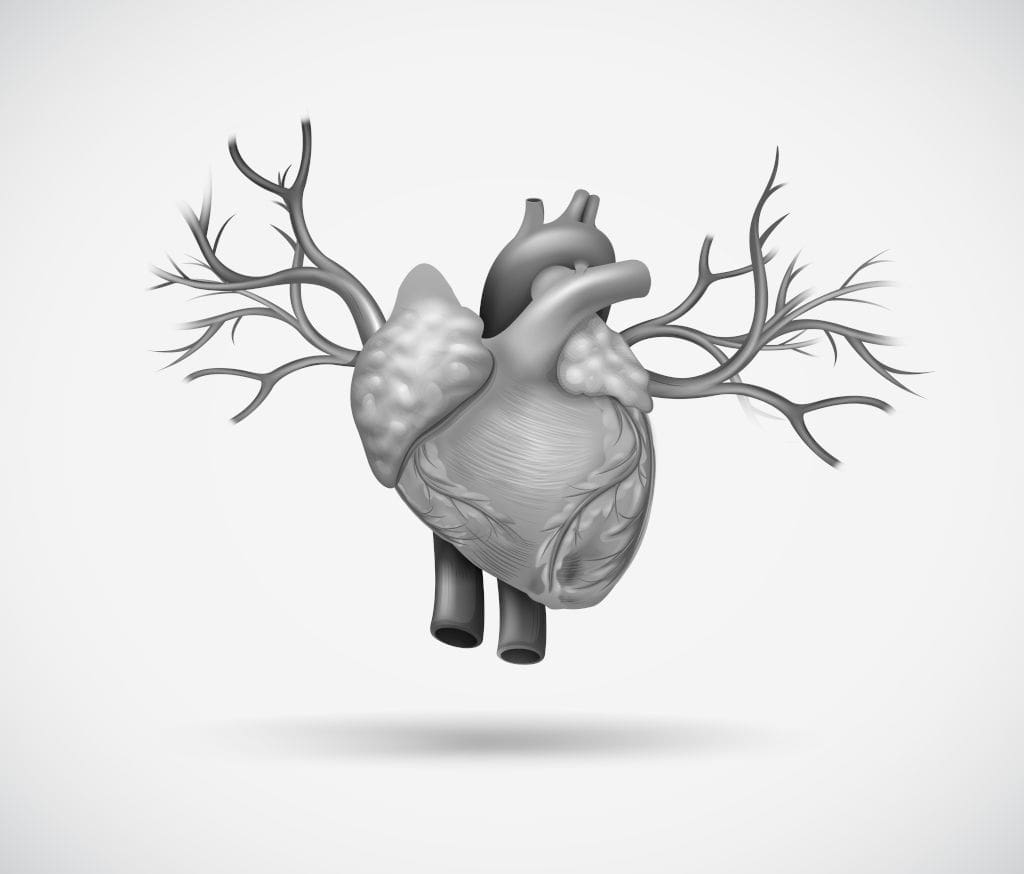Atherosclerosis is a long-term inflammatory condition that causes plaque to accumulate inside the arteries. These plaques are mostly made of lipids, which cause turbulent flow and inflammatory response, leading to atherosclerotic cardiovascular disease (ASCVD).
Atherosclerosis is considered the leading cause of cardiovascular diseases and deaths, affecting about 610,000 Americans annually. About 50% of deaths in developed countries are due to atherosclerosis, a chronic inflammatory disease of the arteries.
Up to 31% of fatalities worldwide in 2015 were caused by cardiovascular atherosclerosis disease. In the USA and EU, atherosclerosis is responsible for 33–40% of all-cause deaths at any age. In addition, it caused $297.7 billion and €196 billion in total economic losses in 2008, respectively.
What Can Cause Atherosclerosis?
Blood is transported throughout the body through arteries, blood vessels, from the heart. The lining of the arteries, known as the endothelium, is a thin layer of cells that facilitates easy blood flow. Plaque can form in the arterial wall when the endothelium is damaged due to risk factors like smoking or high blood fat and cholesterol levels.
The artery openings get smaller as the plaques harden over time, reducing blood flow. The passage of oxygen-rich blood to organs and other body parts might be further restricted. It may even be blocked when these fatty plaques that have built up in the arteries burst open, forming thrombus (blood clots).
Many issues can arise from artery hardening. Blood, oxygen, and nutrients cannot reach the rest of your body through narrow or obstructed arteries in sufficient amounts. The arms, legs, or other body parts may eventually experience tissue death or infection due to blockages. This is indeed an unfortunate situation.
The heart is in danger when the body continues to go through that process. Furthermore, a victim is also at risk of developing a stroke and other health issues.

Types Of Medical Malpractice That Can Arise
The effects of atherosclerosis can be negative and even lethal. As a result, it is crucial for healthcare professionals to diagnose and treat the illness as soon as possible accurately. However, individuals frequently suffer from chronic and irreparable health issues when healthcare professionals fail to recognize and treat atherosclerosis quickly.
Here are the two most common types of medical negligence that can arise:
- Misdiagnosis of Atherosclerosis
When atherosclerosis or other coronary artery disease is identified too late, the patient is left to bear the burden of such a wrong or late diagnosis.
There have been numerous occasions where people with significant chest pain have been admitted to hospitals only to be informed that there was no immediate risk and that the pain was probably due to a less serious condition.
Every time a condition like atherosclerosis is overlooked, it can get worse. This could lead to a fatal heart attack or severe cardiac problems.
A good example of such a circumstance is the case of Manning v. Bellafiore.
In this case, the plaintiff’s deceased had a claustrophobic reaction to an MRI/MRA. He did not finish the test, which is highly necessary to enable the doctor to diagnose and treat his disease promptly.
Plaintiff argued during the trial that the standard of care required doctors to perform an MRI/MRA within twenty-four hours of his initial stroke.
Plaintiff asserts that the defendant violated this standard of care by delaying the MRI/MRA examination. He argued that the defendant failed to inform the decedent of alternatives to imaging, such as appropriate sedation, after it became clear that the decedent’s claustrophobia would otherwise prevent him from finishing the test in a closed MRI/MRA machine.
A misdiagnosed heart attack might result in legal action against doctors and hospitals.

- Unnecessary procedure
Unnecessary cardiac surgery is a hazardous type of surgical error that can cause serious health problems.
Cardiac surgery carries several hazards, even for individuals who genuinely require it. The advantages of the surgery often outweigh any hazards for people who need it. However, the hazards of unnecessary cardiac procedures outweigh any potential advantages by a wide margin. For instance, coronary artery bypass surgery is a very difficult treatment with risks of complications, including death or chronic heart damage.
Ha v. Mun Kung Hong is a good example of this. In this case, the plaintiffs brought a medical negligence action against the defendant based on the coronary artery bypass graft(CABG) surgery done on him.
The plaintiff alleged that the procedure was unnecessary and resulted in numerous issues, including her late husband’s myocardial infarction, which ultimately led to his death.
The court entered judgment for the plaintiffs on the ground that the defendants had a duty of care, and the care had been breached.
Surgery should only be performed by doctors when required, as medical errors are one of the top causes of death in the US.
Major operations and other invasive procedures that are not required result in massive financial waste and can significantly negatively impact health and quality of life.
Role Of Legal Animation In Atherosclerosis Malpractice Cases
Atherosclerosis is a condition that gravely affects the arterial blood vessels. The symptoms of this condition include an unusual heartbeat, excruciating pain, and shortness of breath.
When medical malpractice has occurred, these symptoms are usually very hard to express to the jury. Medical animation is one of the greatest conceivable tools for describing any cardiovascular disease and its symptoms, diagnoses, and potential treatments.
In a misdiagnosis case, for instance, an animation might highlight the injuries incurred before or after operations and display different perspectives from different angles.
In using medical animation, the first aspect is illustrating a healthy arterial blood vessel. The flexibility and elasticity would be highlighted, showing how blood freely flows to the body’s organs. Then, the hardening of the arterial wall would be shown, illuminating how this would affect an individual’s well-being. Hence, portraying a person’s entire medical journey.
The use of medical graphics by the plaintiff’s attorneys to illustrate the main points of their case helps to create empathy for the suffering that their client(s) endured. This is an effective tactic for getting a more favorable decision during a trial.
At Fox-AE, we create medical malpractice trial animation for attorneys who need to help their clients get compensation. Our success stories illustrate how we’ve helped different attorneys on different cases. An atherosclerosis malpractice case won’t be any different. We have medical animators who can work with expert witnesses and attorneys to create atherosclerosis malpractice animation.





